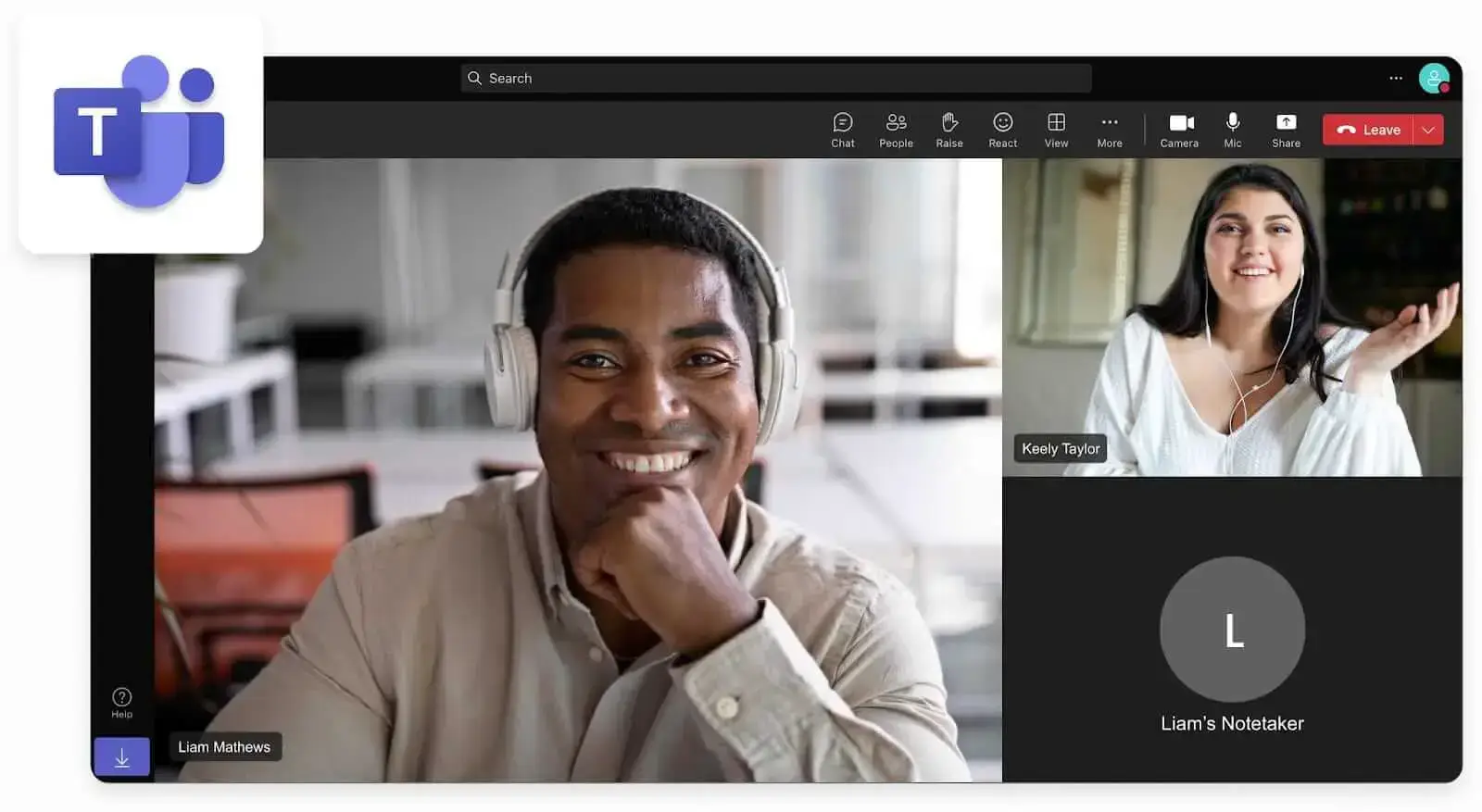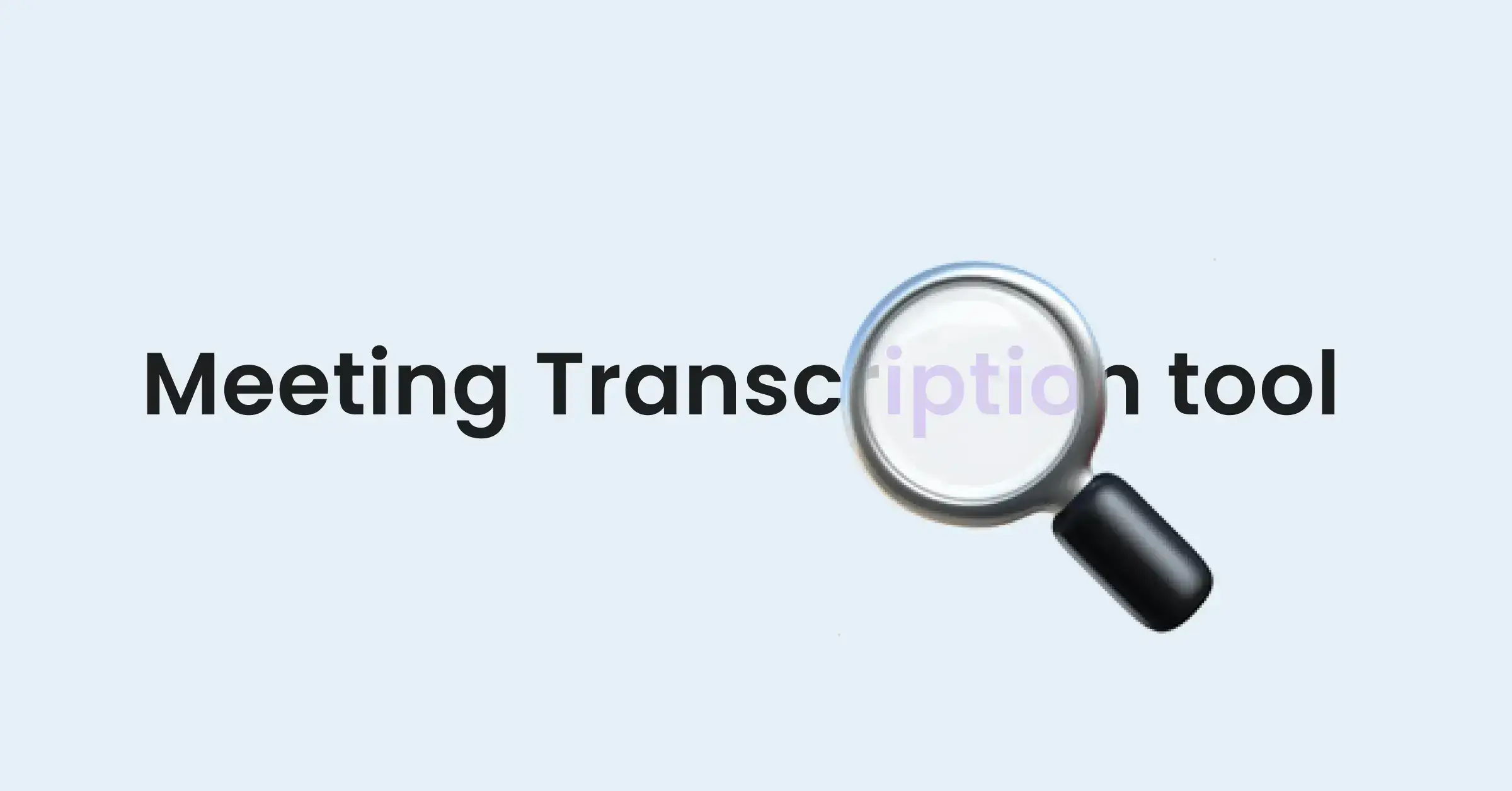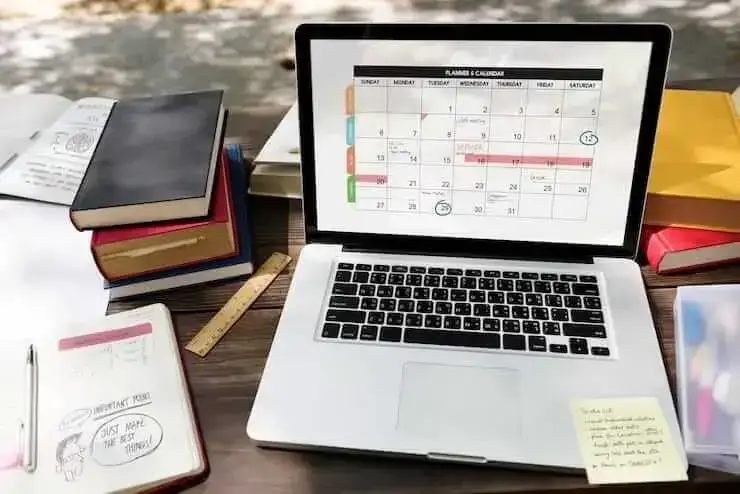How to Plan and Run Productive Sales Meetings [+Free Sales Meeting Agenda]
Learn effective strategies to make your sales meetings more impactful and productive. Discover tips to boost engagement and results!

✅ Free meeting recording & transcription
💬 Automated sharing of insights to other tools.

Image source: wahyu_t on Freepik
Sales meetings are important for keeping your team on track, sharing updates, and ensuring everyone works toward the same goals. But for many teams, sales meetings can feel like an unproductive mess—often taking up time without clear outcomes.
The good news is that with a little planning and the right approach, you can turn your sales meetings into productive sessions that everyone finds valuable. In this guide, we’ll cover practical tips to help you plan and lead sales meetings that are focused, engaging, and that leave your team with clear next steps.
What Is the Goal of a Sales Meeting?
The goal of a sales meeting is to create alignment within the sales team by reviewing key performance metrics, addressing obstacles, and setting actionable objectives.
These meetings provide a structured way to evaluate current sales strategies, ensure progress toward targets, and discuss any emerging market opportunities or customer needs.
Types of Sales Meetings
Sales meetings come in various formats, each serving a specific purpose to keep teams aligned, motivated, and productive.
Here are the main types of sales meetings:
- One-on-one sales meetings
- Weekly sales meetings
- Quarterly sales meetings
- Annual sales meetings
A. One-on-One Sales Meetings
One-on-one sales meetings are private check-ins between a sales manager and an individual team member. These meetings focus on the salesperson’s goals, performance, and any specific challenges they face.
They’re a great opportunity to provide personalized feedback, discuss development areas, and review recent wins or areas needing improvement.
In one-on-one meetings, managers can also offer guidance on strategies, assess progress on personal targets, and ensure the salesperson feels supported and motivated.
- Purpose: To provide personalized guidance and address individual challenges or achievements
- Frequency: Weekly or biweekly, depending on the team’s needs
B. Weekly Sales Meetings
Weekly sales meetings bring the entire sales team together to review current performance, share updates, and discuss priorities for the coming week. They’re an essential part of staying aligned on team targets, understanding any immediate issues, and ensuring everyone is on the same page regarding strategy.
Sales reps often share insights from the field, and managers can address any adjustments needed to meet short-term goals.
- Purpose: The weekly sales meeting is ideal for reviewing team progress, discussing immediate goals, and aligning weekly strategies.
- Frequency: Weekly, typically at the start or end of the week.
C. Quarterly Sales Team Meetings
Quarterly sales team meetings take a broader look at the team’s performance, focusing on reviewing quarterly goals, examining trends, and identifying areas for improvement. They are ideal for a more in-depth analysis of sales data, discussing market shifts, and revisiting strategies.
They also provide time for team development activities, like training or workshops, which support skill growth and adaptation to any new challenges or opportunities identified over the past quarter.
- Purpose: To review quarterly performance, address trends, and discuss strategic adjustments
- Frequency: Once per quarter, often at the start of a new quarter
D. Annual Sales Team Meeting
The annual sales team meeting is a comprehensive session that looks back at the past year’s performance and sets the direction for the coming year. This meeting is often more formal, with a detailed analysis of yearly results, discussion of successes and lessons learned, and goal-setting for the year ahead.
It’s also a chance to align the team with the company’s overall strategy, ensuring everyone understands the larger goals and how their efforts contribute to them. This meeting can include motivational elements, like recognizing top performers and introducing incentives.
- Purpose: To review yearly performance, set annual goals, and align the team with the company’s strategic direction.
- Frequency: Once a year, typically at the start or end of the fiscal year.
How to Prepare for Successful Sales Meetings
Here’s how to prepare for a successful sales meeting:
- Define your objectives
- Create an agenda
- Set a clear meeting cadence
- Identify sales reps' training topics
- Plan for celebration and team building
- Get the sales data you need before your meeting
- Be flexible when needed
1. Define Your Objectives
Defining your objectives for a sales meeting will help you create a focused, goal-driven session that leaves your team with clear actions and a sense of purpose.
Start by asking, “What do I want this meeting to achieve?” It could be reviewing progress, addressing specific challenges, setting goals, or aligning on a new strategy. Next, think about what a successful outcome looks like.
For example, do you want each team member to leave with a specific sales target? Or do you need everyone to walk away with an understanding of a new product line? Outline these goals in specific terms so there’s no guesswork.
Afterward, decide on the most important topics that will help you achieve your goals. Limit the agenda to avoid overloading the team and ensure you focus on the objectives that truly matter for the meeting.
Lastly, define what actions you want your team to take after the meeting. This could include setting new sales calls, following up on specific leads, analyzing the sales pipeline, or completing a training session.
2. Create an Agenda
After stating the purpose of the meeting, outline the main points you need to cover to reach the meeting’s goals. Common topics might include performance updates, key challenges, upcoming targets, and strategy adjustments.
Then, estimate how much time you’ll need for each topic. For example, give 10 minutes for updates, 15 minutes for strategy discussions, and so on. This keeps the meeting organized and ensures every topic is addressed within a manageable timeframe.
Additionally, if certain team members need to present information or lead discussions, note their names next to the relevant topics. This clarifies responsibilities and helps everyone prepare.
Finally, reserve a few minutes at the end for questions and to summarize action items. This prompts people to leave the meeting with a clear understanding of what to do next.
3. Set a Clear Meeting Cadence
Think about how often your team needs to meet. A one-on-one meeting or a weekly one may work well for regular updates, while monthly or quarterly sessions are better for deeper strategy discussions. Choose a frequency that balances staying connected with respecting everyone’s time.
After a few,regular sales meetings assess whether your choice is working. If sessions feel too frequent or not frequent enough, be open to adjusting the schedule. A meeting cadence that fits your team’s needs will make meetings more productive and reduce unnecessary sessions.
PRO TIP: Pick a specific day and time for each type of meeting (e.g., every Monday at 10 AM for weekly check-ins). Consistent scheduling helps the team plan around these meetings and ensures everyone knows when to prepare.
4. Identify Sales Reps Training Topics
The sales process is a complex one, requiring ongoing training for your team. But how can you identify the real pain points of your sales representatives and come up with relevant sales meeting ideas?
Here’s how to find training topics for your sales team:
A. Check out KPIs
Start by looking at recent key performance indicators and metrics. Identify areas where the team may struggle, like conversion rates, lead follow-up, sales processes, or product knowledge. These patterns will help you spot specific skills that need improvement.
In this instance, MeetGeek’s conversation intelligence tools can prove invaluable. For example, you can look at the insights extracted from your team’s previous calls to clearly see where they’re struggling, whether it’s generating interest, maintaining engagement, or securing commitment.

B. Ask Your Sales Reps
Talk directly with your team to understand where they need support. Often, they’ll have insights into areas they’d like to strengthen, like handling objections or improving time management.
C. Consider Recent Market Changes
If there have been market changes like new competitors, products, or customer preferences, think about training topics that can help reps adapt.
D. Observe Team Interactions
Watch how your team interacts during meetings or role-playing exercises. This can reveal common challenges they face, like negotiating or effectively using CRM tools, which can become training topics.
E. Choose High-Impact Topics
Prioritize topics that will have the biggest impact on the team’s success. For example, improving product knowledge might be high-impact if it helps close more deals while refining communication skills could support stronger client relationships.
5. Plan for Celebration and Team Building
Create a space in the meeting for team members to recognize each other’s contributions. Encourage everyone to call out a teammate who helped them succeed, whether it was through sharing a lead, offering support, or going above and beyond on a project.
Additionally, think about adding a simple, celebratory element to the meeting, like awarding a “Top Performer” or “Most Improved” title. If the meeting’s in person, choose a quick, fun activity to strengthen team bonds, like a short trivia round or a quick brainstorming exercise.
6. Get the Sales Data You Need Before Your Meeting
Before each meeting, decide which metrics are most relevant for this meeting. Common ones include total sales, conversion rates, pipeline status, and individual or team progress against targets. For this, you can pull data directly from your CRM or sales dashboard.
PRO TIP: Set filters to get specific views, such as performance over the past month or quarter. This ensures you’re seeing accurate, up-to-date information that reflects the team’s current performance.
Additionally, if you need details on specific deals or accounts, ask team members for more context on certain numbers, like why a deal is moving slowly or what helped close a recent sale. Their input gives you a fuller picture of the data.
For a 360° approach, an AI Meeting Assistant for sales teams like MeetGeek will help you keep a close eye on how well your team is doing, as well as help you identify the areas you can improve.
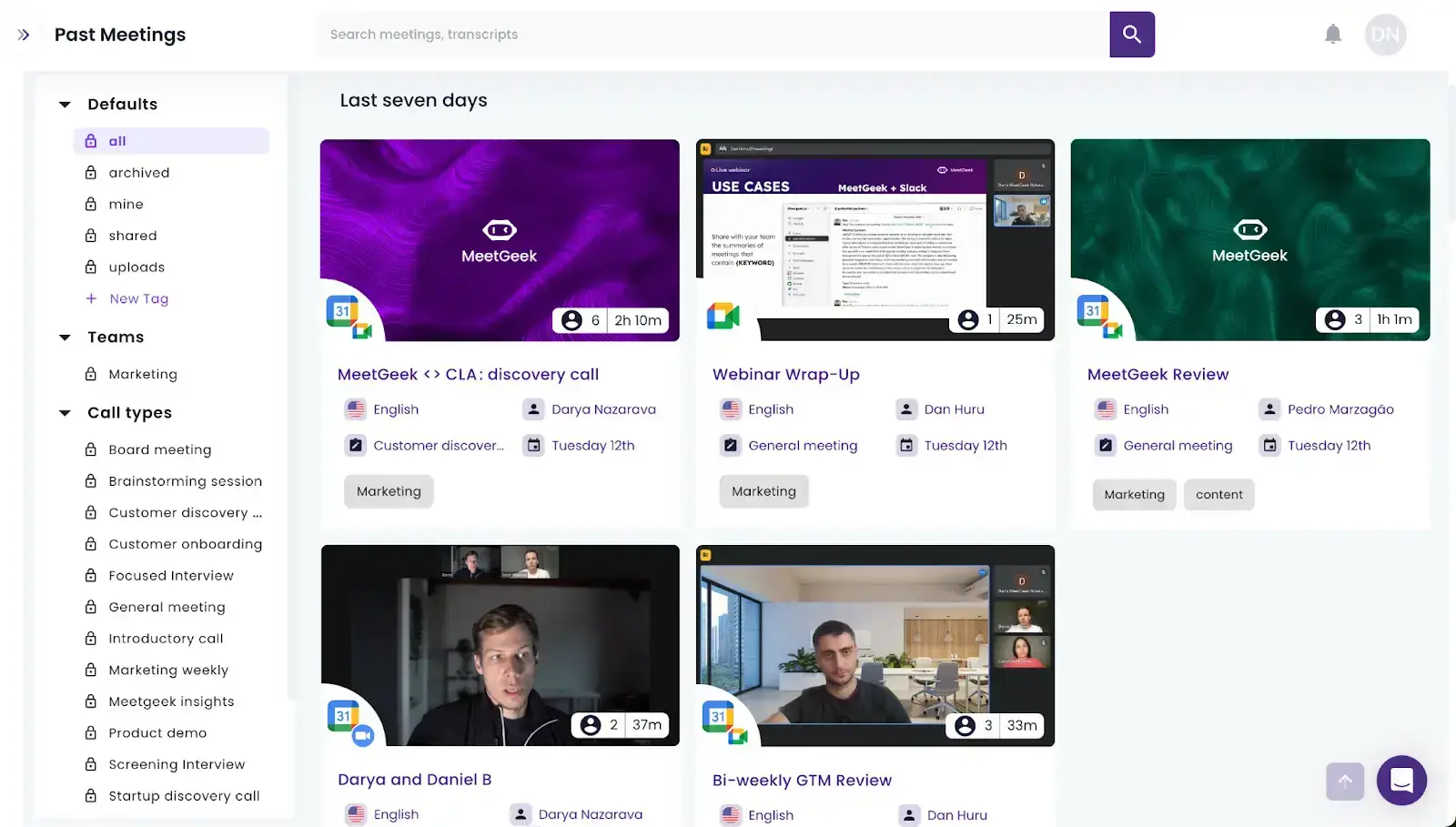
Here is what MeetGeek for sales meetings can do for you:
- Automatic recording & transcription in 30+ Languages: MeetGeek automatically captures and transcribes every sales call with precision, allowing your sales representatives to concentrate on closing deals without distraction.
- AI-powered analytics: MeetGeek analyzes your meetings and highlights essential KPIs, such as call sentiment and participation rates, helping you identify improvement areas and celebrate successes with concrete evidence.
- Targeted coaching: Utilize the recordings and transcripts to identify specific areas where sales reps could benefit from additional resources, whether it's explaining product features or enhancing negotiation skills.
- Seamless integration: Enhance your workflow by integrating MeetGeek with popular CRM platforms like Pipedrive, Salesforce, or HubSpot, facilitating smooth update of sales deals in your CRM.
- Collaborative workspace: Sales representatives and team members can easily access and collaborate on meeting notes, elevating asynchronous teamwork to a new level.
- Mobile functionality: For in-person sales meetings, MeetGeek’s mobile app is the perfect tool. It allows you to record, transcribe, and summarize meetings on the spot, directly within the app.
- Centralized repository: All recordings, transcripts, and insights are securely stored in one location, making it easy for every sales team member to access these resources whenever needed.
- Meeting Templates: Access a library of meeting templates from MeetGeek or create custom templates tailored to your business needs. This ensures your sales team consistently captures effective meeting notes suited to your context.
7. Be Flexible when Needed
Sometimes, a topic may need more discussion than expected. If your team has questions or wants to dive deeper, be ready to adjust the sales meeting agendas. Adding a buffer time for key topics can help you avoid rushing through important points.
Moreover, if there are last-minute changes in sales goals, product updates, or market conditions, don’t hesitate to adapt the meeting content.
PRO TIP: Also remember to let your team know that adjustments are welcome and that the goal is a productive meeting. This helps everyone stay open to changes and focused on making the most of the time together.
How Sales Managers Can Run a Productive Meeting
Here’s how to run a productive meeting as a sales manager:
- Give an update on the sales team’s main objective
- Balance positive and constructive feedback
- Encourage participation from your sales team
- Watch training videos and refine talk tracks
- Exchange ideas and explore solutions as a team
- Analyze your competition
- Set clear action items for all salespeople and managers
1. Give an Update on the Sales Team’s Main Objective
Begin by restating the team’s main objective and why it matters—whether it’s reaching a quarterly sales goal, increasing product adoption, or boosting customer satisfaction.
Share the latest numbers or KPIs that show progress toward this goal, like current sales volume, pipeline health, or customer feedback ratings.
If you’re ahead or behind, briefly explain any factors that contributed to that outcome. This transparency helps the team see the bigger picture and understand exactly where they stand.
2. Balance Positive and Constructive Feedback
Recognize specific achievements and individual contributions. For example, highlight a rep who closed a challenging deal or someone who exceeded their weekly call goal. Then, address areas where the team can improve, focusing on specific behaviors.
For instance, instead of saying, “We need to close more deals,” say, “Let’s work on shortening follow-up times by reaching out within 24 hours of a demo.” This keeps feedback focused, practical, and directly tied to the objective, helping the team understand both what’s working and where to make adjustments.
3. Encourage Participation from Your Sales Team
During the meeting, create opportunities for your team to actively engage by asking specific, open-ended questions like, “What’s one challenge you’re facing with the sales process?” or “Are there any insights you’ve gained from recent client conversations?”
Encourage each sales rep to share their unique approaches or solutions, which can lead to fresh ideas and best practices that others might adopt. Additionally, allow time for questions and follow-up discussions to ensure everyone feels heard. This helps you create a collaborative atmosphere and shows that everyone’s insights are valued, giving reps the confidence to become sales leaders.
4. Watch Training Videos and Refine Talk Tracks (MeetGeek)
Adding training videos and talk track practice to your sales meeting makes skill-building easy, keeps it hands-on, and gives the team a chance to learn new techniques they can apply right away.
For this, the secret is to choose a quick training video—about 5 to 10 minutes—that’s relevant to your team’s goals. It could be about handling customer objections, pitching a product, or closing deals. Keeping it short makes it easy to fit into the meeting without taking too much time.
An easy way to do this is by going to your MeetGeek repository, finding the recording of a successful sales call or demo, and building your training session around that. In fact, MeetGeek’s labeling system makes the entire process a lot easier by categorizing meeting segments into ‘Facts”, “Concerns”, “Questions”, etc.
This way, you can jump straight to the sales rep pain points you’re addressing and structure your training session more logically.
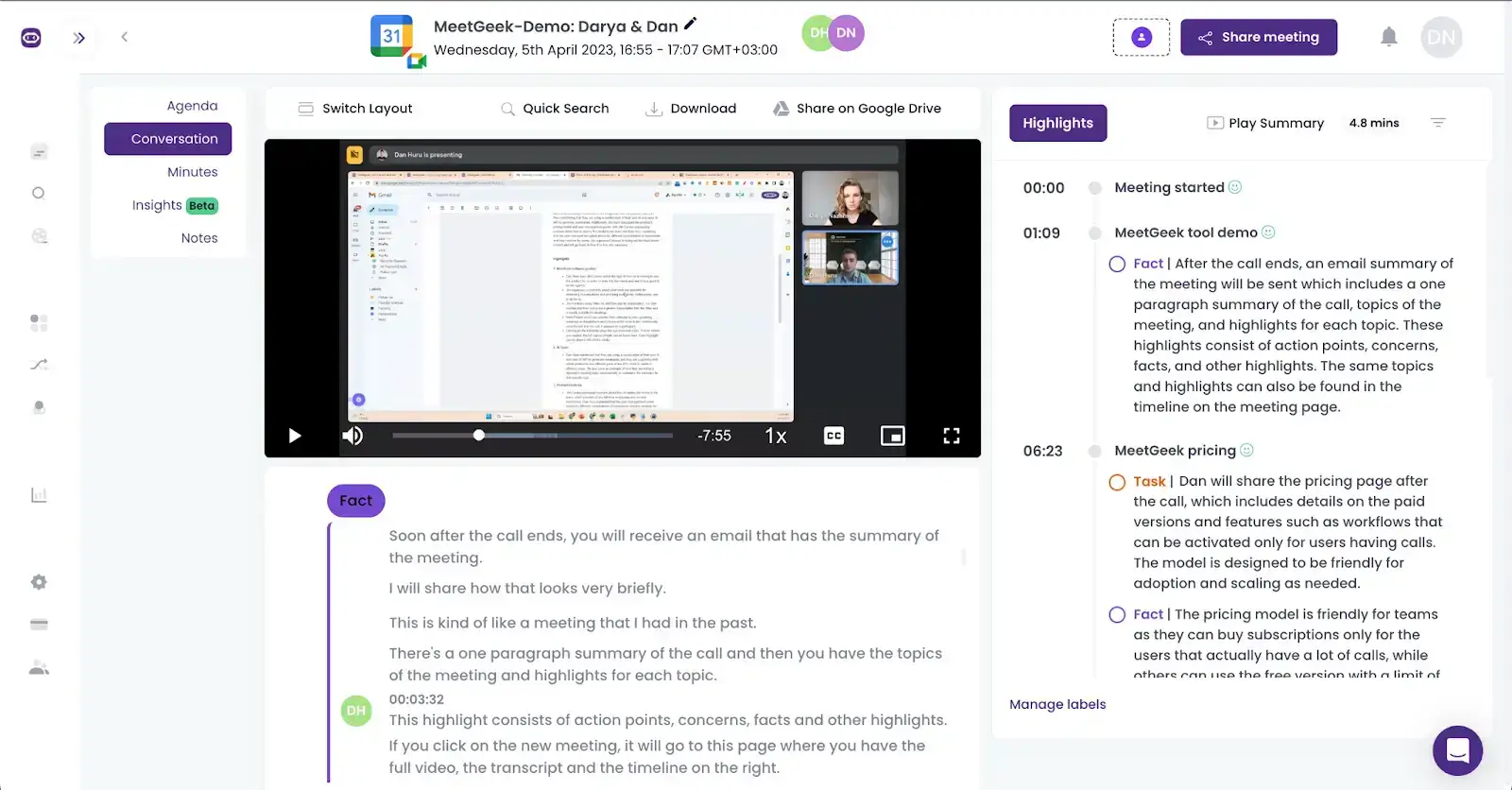
After watching, ask a few open-ended questions to get the team talking. For example, “What’s one tip from the video that you think could help you become a sales leader?” or “How could you see yourself using this technique in your calls?”
Alternatively, stitch together some memorable and inspiring sales success stories that everyone can learn from.
Then, use the transcript generated by MeetGeek to create one or two key talk tracks related to the video’s topic. Break the team into pairs or small groups and have them practice delivering the talk track.
PRO TIP: Encourage sales team members to adjust the talk tracks slightly to fit their style, so it feels natural and authentic.
5. Exchange Ideas and Explore Solutions as a Team
Create a space where everyone feels comfortable sharing their successes, challenges, and ideas. Start by asking a focused question like, “What strategies have been helping you connect with clients?” or “Is there a specific challenge you’d like input on?” As each person shares, encourage discussion and highlight any practical solutions that others might try.
PRO TIP: When a helpful idea comes up, think of ways to apply them across the team to help sales reps learn from each other and build a supportive problem-solving approach.
6. Analyze Your Competition
Discuss what your competitors are doing and how it might impact your team’s approach. Assign one team member to gather updates on competitors each month, such as changes in their pricing, new product launches, or client feedback.
Then, during the meeting, ask questions like, “How could we position ourselves differently?” or “What strengths should we highlight?”
Use this time to brainstorm how you can turn competitors’ strengths or weaknesses into opportunities. Wrap up by assigning specific actions based on what you’ve discussed, like updating a pitch or adjusting messaging, so the team can leverage these insights right away.
7. Set Clear Action Items for All Salespeople & Managers
Before closing the meeting, go over specific action items for each person—yourself included. Make these tasks straightforward and measurable.
EXAMPLE: Instead of saying, “Increase follow-ups,” set a clear action like, “Follow up with your top 5 prospects by Friday.” For managers, outline tasks that directly support the team, like “Review call recordings for each rep” or “Schedule one-on-ones to check in on progress.”
Review these actions together to ensure they make sense within your overall strategy, and that everyone leaves the meeting knowing exactly what to focus on next.
How to Follow up on a Sales Meeting
Once your sales meeting is done, you may be surprised to learn that you’re not. This is where effectively following up comes in.
Here’s how to follow up on a sales meeting:
- Document the meeting points: As soon as the meeting ends, organize the notes while everything is fresh. Include the main points discussed, specific action items, and any important decisions or updates. Make sure each action item is clear and assigned to the right person, with deadlines if applicable.
- Prioritize the information: To keep your notes easy to read, label the critical points and next steps accordingly. Use bullet points and sections, such as “key takeaways,” “assigned action items,” and “important updates.”
- Follow up on action items: Check in with team members on their action items as deadlines approach. You could set up reminders in Slack or your project management tool, or send a quick message to ask if they need any support.
- Track and update progress Consider creating a dedicated communication channel or thread for ongoing updates related to the meeting’s action items. Team members can post progress reports, share insights, and ask questions here.
- Schedule a follow-up session: If the team needs further alignment or there are unresolved issues, consider scheduling a brief follow-up meeting to address these points. This can be a quick 10-15 minute session to review progress and adjust the next sales meeting agenda as needed.
- Share the summary in your workspace: Post the meeting summary in your team’s Slack channel or workspace, where everyone can easily access it. Tag team members who have specific action items to make sure they see what’s expected of them.
PRO TIP: For sales teams that rely on centralized databases to keep the entire team in the loop and up-to-speed, MeetGeek is the perfect solution. Not only does it record, transcribe, and summarize your meetings, but it also updates your shared workspaces with the key points and action items it extracts using AI.
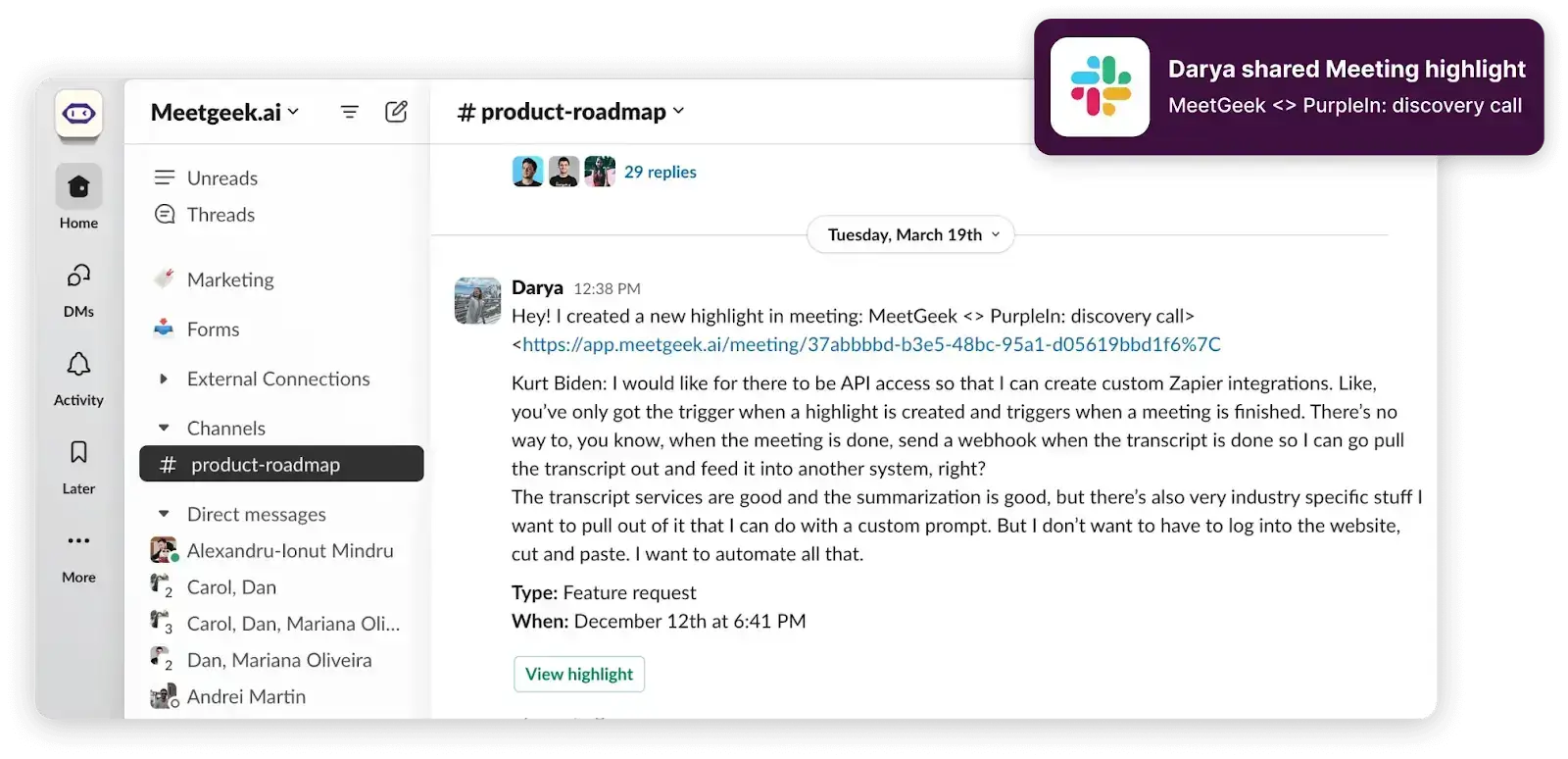
Plus, with GDPR and HIPAA compliance, you know that MeetGeek takes privacy seriously, so even your sensitive information stays protected in the process!
Sales Meeting Agenda [Free Template]
For a truly successful sales meeting, a structured yet flexible approach works best. Check out this agenda that covers all the essentials you may need. Just adjust the timing or add specific points based on your meeting focus!
| Sales Meeting Agenda Template [Your Team/Company Name] Sales Meeting Date: [Insert Date] Time: [Insert Start and End Time] Location: [Insert Meeting Link or Physical Location] Participants: [List Team Members Attending] 1. Welcome and Meeting Objective (5 mins) Quick overview of the meeting’s main goals Set expectations for what you want to achieve 2. Review Last Meeting’s Action Items (5-10 mins) Go over action items from the previous meeting Confirm completion status or update timelines for unfinished tasks 3. Sales Performance Updates (10-15 mins) Key metrics overview (e.g., sales volume, conversion rates, pipeline status) Share recent wins, challenges, and notable trends Compare current performance to targets, highlighting progress or gaps 4. Key Deals & Pipeline Review (15-20 mins) Discuss major deals in progress: current status, next steps, and any blockers Share insights on high-priority leads and opportunities Identify specific support needed to close deals 5. Competitor and Market Insights (10 mins) Briefly review recent competitor activities or market shifts Discuss any impact on your sales strategy and brainstorm adjustments 6. Training or Skill-Building Session (10-15 mins) Share a brief training video or introduce a new technique Practice key talk tracks or role-play scenarios as a team Encourage questions and discussions around the training topic 7. Open Floor for Team Challenges and Solutions (10-15 mins) Invite team members to share any roadblocks or ideas for improvement Discuss possible solutions and agree on any new approaches Capture key takeaways and assign follow-up actions 8. Upcoming Goals and Action Items (5-10 mins) Review team goals for the upcoming week/month/quarter Clearly outline action items for each team member, including deadlines Confirm any specific metrics or targets for tracking progress 9. Any Additional Announcements or Reminders (5 mins) Share company updates, product news, or team announcements Remind the team of upcoming deadlines, events, or new resources 10. Meeting Recap and Next Steps (5 mins) Summarize key takeaways and final action items Confirm any follow-up meeting dates or check-ins Thank everyone for their participation and close the meeting Notes: [Space to jot down additional thoughts or points for post-meeting follow-up] Meeting Facilitator: [Name of person leading the meeting] Action Items Documented By: [Name of note-taker] |
Maximize the Impact of Your Sales Meetings with MeetGeek!
In conclusion, planning and running productive sales meetings is all about clear agendas, actionable goals, and creating space for collaboration. With these strategies, every meeting will be more focused, effective, and impactful than the last one.
To make your next sales meeting even more powerful, consider MeetGeek to automate meeting recordings, transcriptions, and action item extraction, making it easy to keep everyone on the same page and follow up effectively. Maximize the Impact of Your Sales Meetings with MeetGeek!
.avif)























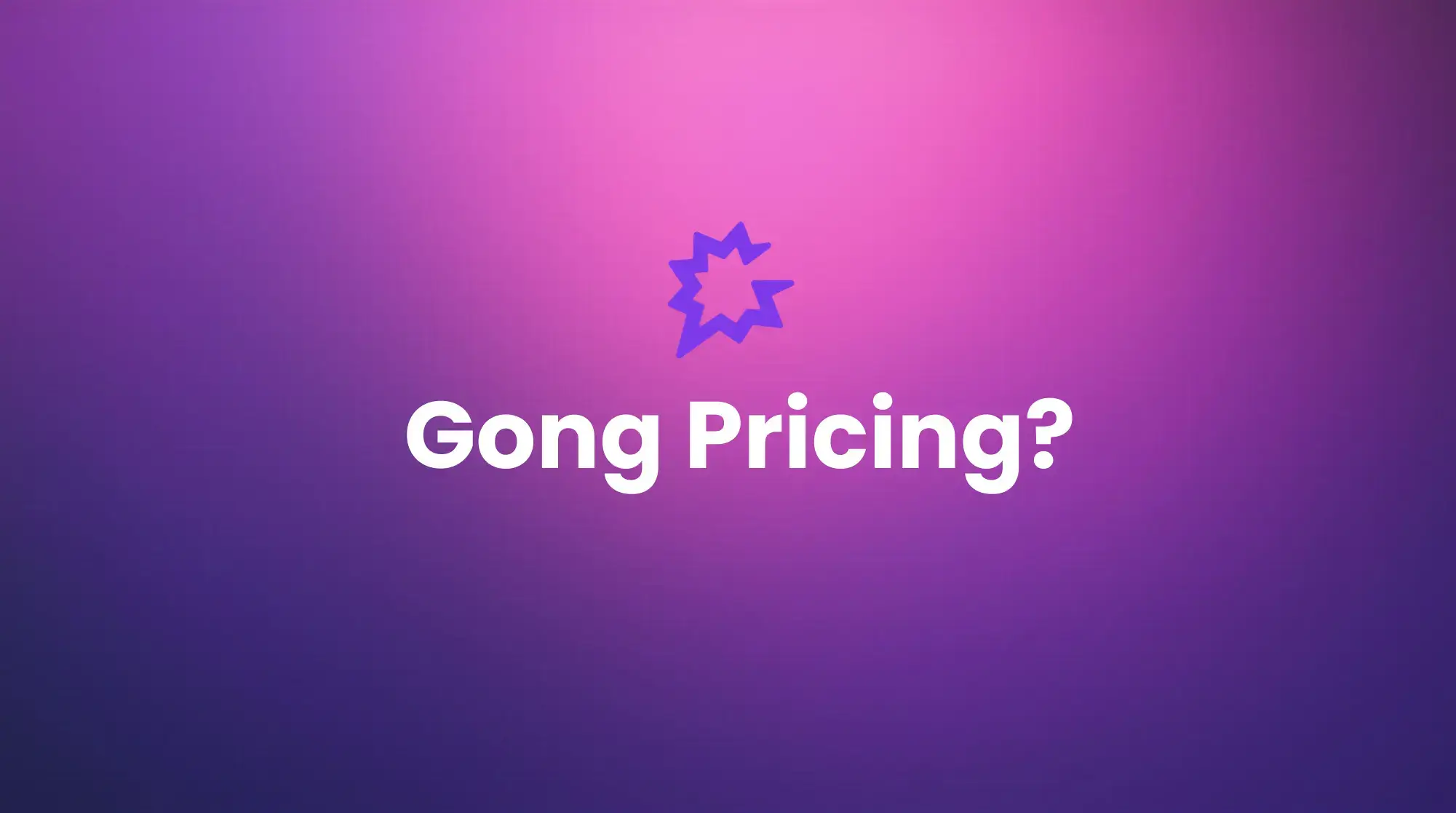
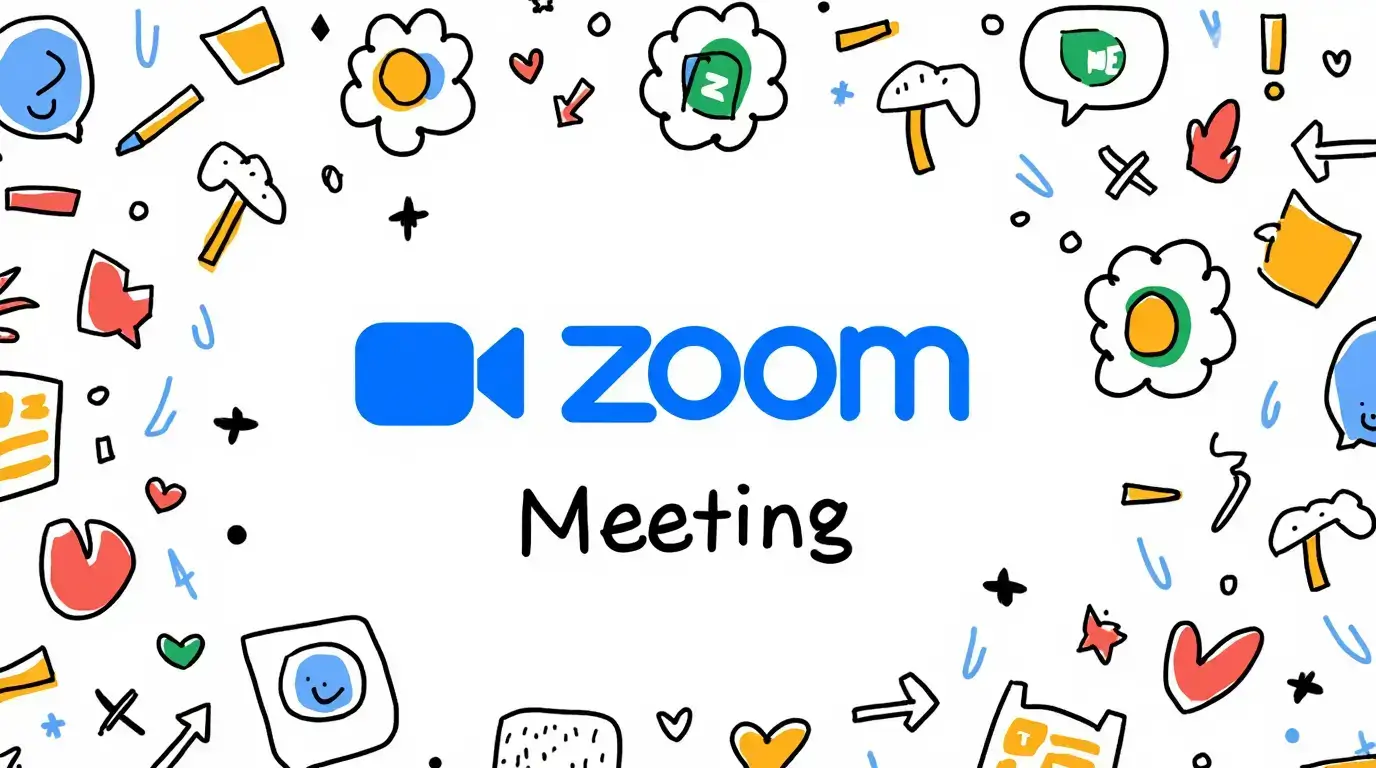




.png)








